David Owens led a walk round the northern section of Sulham Woods on the morning of Sunday 20 October. It was raining a little, but not as much as most of the forecasts had predicted. The first named storm of the season, Storm Ashley, was out to the west and had gale force winds associated with it. Members gathered at the western end of Beech Road in Purley before setting off up the public footpath towards Sulham Woods. David distributed sheets with pictures of different classes of fungi (Basidiomycetes and Ascomycetes) and slime moulds (Myxomycetes). The path led through a small stretch of woodland, where sightings included Hairy Curtain Crust Stereum hirsutum, Yellowing Curtain Crust S. subtomentosum and Burgundydrop Bonnet Mycena haematopus. Jelly Ear Auricularia auricula-judae was growing up a dead Elm. Next to the woodland edge was a new stock-proof fence. The field beyond was being grazed by a small herd of cattle and there was also a Roe Deer. It is part of the Sulham Woodmeadows scheme. The field, which is on Plateau Gravel, was formerly used to grow arable crops, but it was poor soil and full of flints and the farmer thought that he had probably been cultivating it at a loss. Instead, it is being converted to more nature-friendly use. If, as expected, a market in biodiversity capital is developed, then the Woodmeadows land will be able to provide Biodiversity Units for sale. The section which was being inspected had been seeded earlier in the year with a grass and wildflower mix. Several large Black Nightshade plants were growing next to the path. Other plants growing nearby included Field Pansy, Wild Basil, Common Knapweed, Smooth Hawksbeard, Common Sorrel, Devil’s-bit Scabious and Black Medick. The path led into Mosshall Wood, the northernmost section of Sulham Woods. The first part of the wood is dominated by Beech and the ground was carpeted with a rich tapestry of red and orange leaves. There are two big chalk pits. A fallen Beech tree was leaning out over one of the chalk pits. At its end were tufts of gleaming white, slimy Porcelain Fungus Oudemansiella mucida. A slime mould, made up of tiny yellow spheres, was growing on dead wood. Jim Wills demonstrated how the skin of the cap of the Peeling Oysterling Crepidotus mollis was elastic and could be peeled away from the rest of the cap. The walk continued through a section of the wood which was dominated by dead Ash and on to the north-west corner of Mosshall Wood, a further section of Beech wood. A number of Helleborine seed heads were found down amongst the leaf litter, and there was some debate as to whether these were Broad-leaved or Narrow-lipped Helleborines. Continuing along the path, the next stop was to admire several long lines of the large Trooping Funnel fungus Clitocybe geotropa. Other specimens nearby included a Deceiver Laccaria laccata, King Alfred’s Cakes Daldinia concentrica on Ash, a gleaming white and slimy Ivory Woodwax Hygrophorus eburneus on soil, Turkeytail Trametes versicolor and a Lumpy Bracket T. gibbosa. As the group moved on, there was a loud cracking noise ahead and to the left and a dead branch came crashing down. Strong gusts of wind triggered a blizzard of falling leaves. A Magpie Inkcap Coprinopsis picacea which was well past its best was spotted at the end of a log. At the top of its long stem, its cap had rolled back into a black inky mess. Half way along the fallen log was a younger specimen, not yet fully unrolled. The route continued along the track which follows the line of Chalk and Beechwood until it was crossed by a footpath which climbed up through the conifer plantation which is to be found above the Chalk. Spiny Puffball Lycoperdon echinatum and Bush Vetch were seen here. The footpath passes through a gateway and emerges in the field above the woods. In the gateway were a number of specimens of Coral Fungus. The field is part of the Sulham Woodmeadows scheme. The stock fencing on either side of the footpath was much higher here than on the fence near the start of the walk. It is deer-proof fencing because a lot of trees and shrubs will be planted in the section closest to the woods. It will be laid out in a scalloped fashion, creating sunny and sheltered conditions for butterflies and other invertebrates. A line of trees hides the next path which leads back to Mosshall Wood. There are many Field Maples in the strip of woodland and their fallen leaves were predominantly yellow and green, in contrast to the reds and oranges of the Beech leaves which had been seen earlier. Another slime mould was seen here, this time with little orange spheres. The next path led eastwards along the southern boundary of Mosshall Wood. There were several clumps of Butcher’s-broom with bright red berries and a Yellow Stainer Agaricus xanthodermus was found nearby. The wind got up again and there was the alarming sound of another tree falling, somewhere deeper in Mosshall Wood. It did not feel safe and the priority was to leave the wooded area as quickly as possible. The new deer-proof fencing prevented an immediate exit from the wood, but the path hugged the edge of the wood until it emerged in the open fields on the eastern side of the woods. The route then led back to Beech Road.
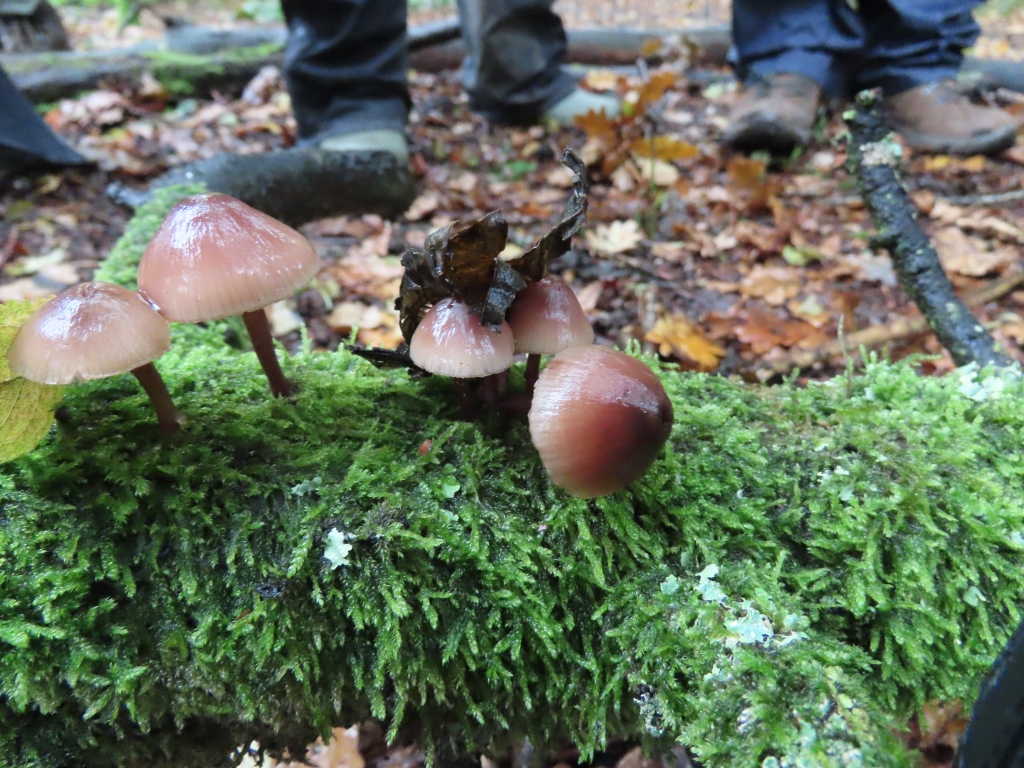

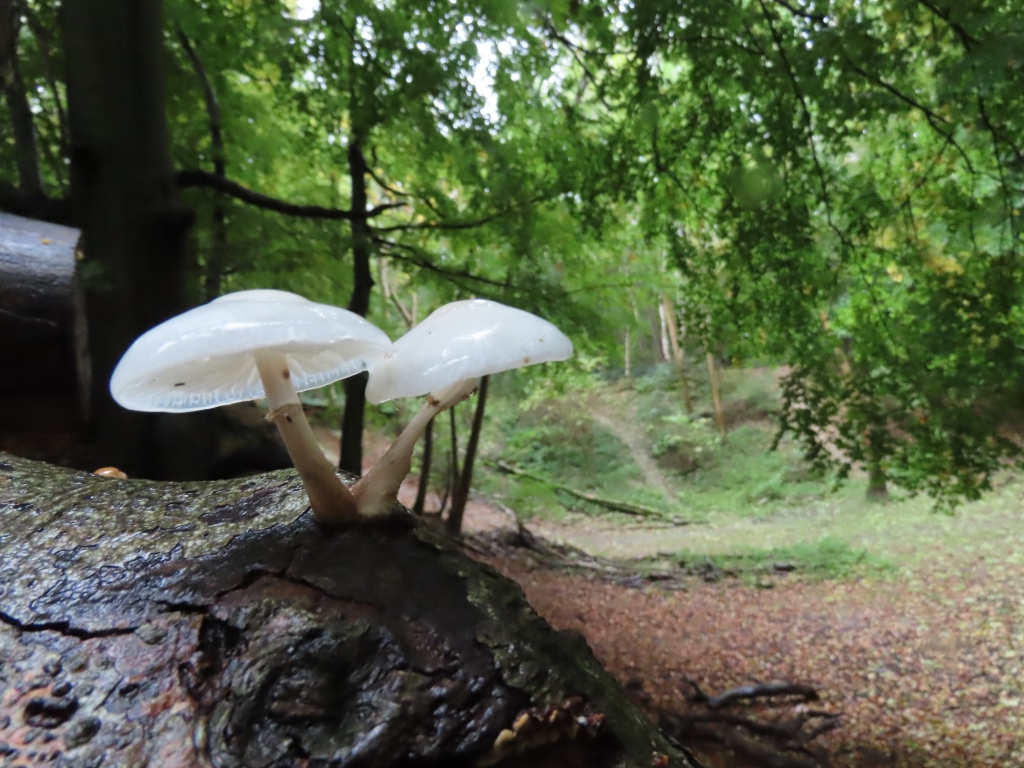
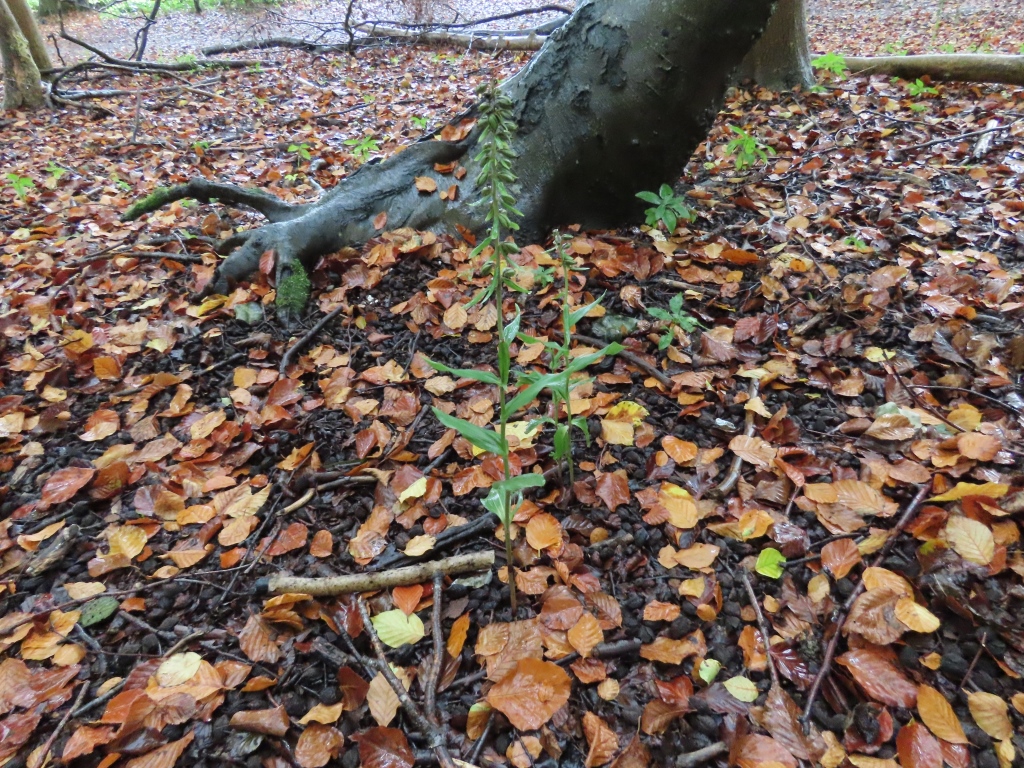
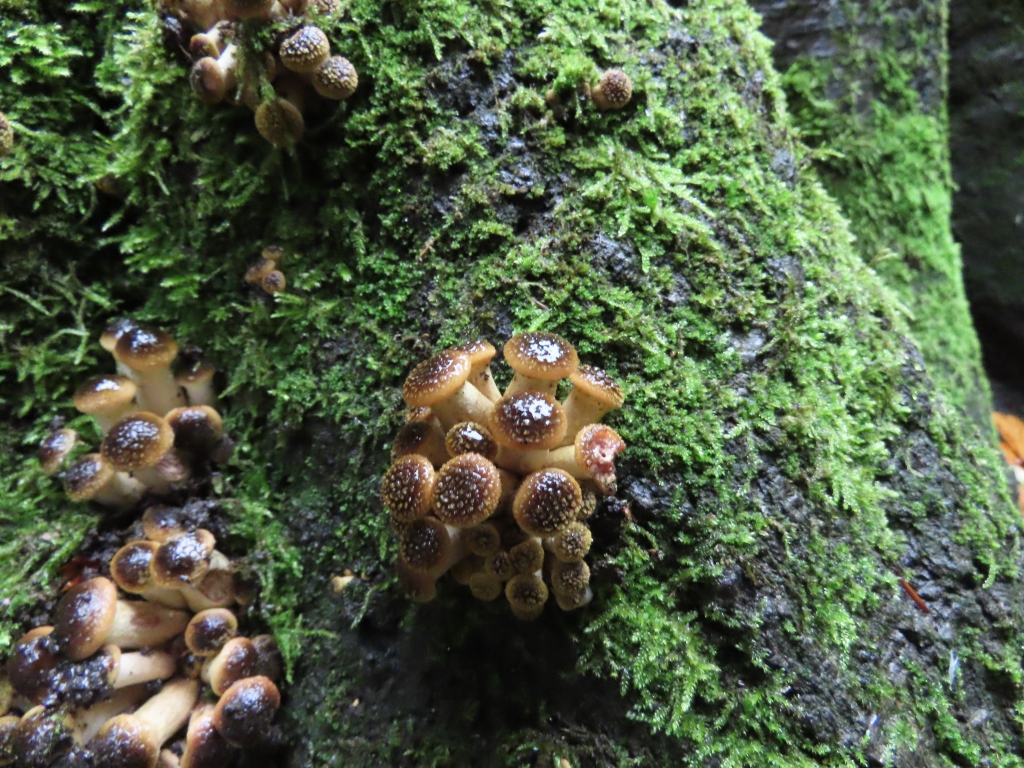
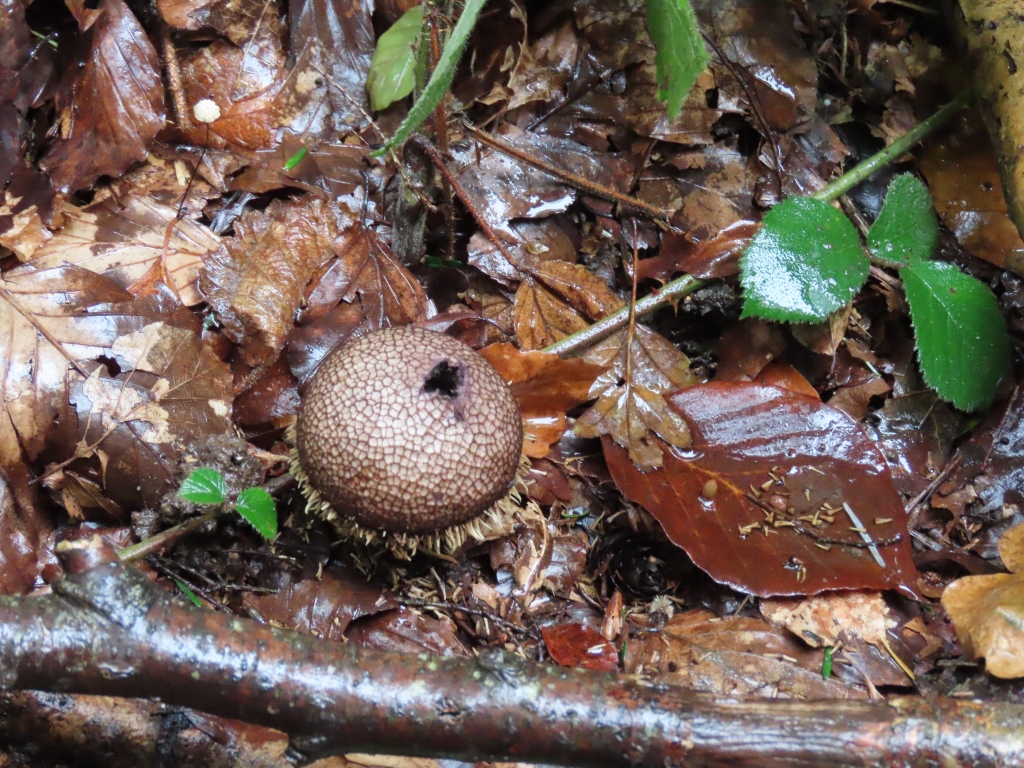
Pictures by Fiona Brown
